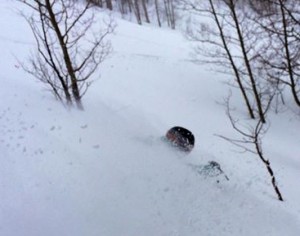Widgetized Section
Go to Admin » Appearance » Widgets » and move Gabfire Widget: Social into that MastheadOverlay zone
Weekend storms deliver nearly a foot of new snow at Vail, 14 inches at Beaver Creek
More snow in the forecast for the coming week
March came in like a snow lion at Vail and Beaver Creek over the weekend, dumping nearly a foot of new snow at Vail and 14 inches of fresh at the Beav’.
The new pasting brought Vail’s season total to the magical 250-inch mark, or more than 20 feet of snow so far this season, with nearly two months of snow riding still to go (closing day is Sunday, April 20). Vail averages 350 inches a year and saw a monster April last season, with nearly 100 inches of snow allowing the company to re-open the mountain for additional skiing.
According to forecasters, the snow cycle will continue this week.
“A few inches of snow is possible for the northern mountains on Monday evening, then a stronger wave will bring 3-6 inches to most mountains Tuesday night,” meteorologist Joel Gratz wrote this morning on Opensnow.com.
“An even stronger storm will bring 4-8″ inches to many mountains on Thursday night into Friday. The best powder days this week will be Sunday morning (a few inches of fresh on Saturday’s leftovers), Wednesday morning, and Friday morning/day (perhaps the best day). Next weekend will be dry.”
But the new snow and wind has made conditions increasingly dangerous in the backcountry. The Colorado Avalanche Information Center (CAIC) rated the avalanche danger in the Vail and Summit County backcountry as “considerable” on Saturday.
“As snow and wind continues the avalanche danger is increasing, and with early February’s historic avalanche cycle fresh in our minds, we should give ourselves a wide buffer in steep or consequential terrain,” the CAIC wrote Saturday. “Today, avoid all steep, wind affected terrain and be wary of isolated cross-loaded features near treeline. Due to the presence of deeply buried weak layers, these avalanches have the potential to step down, triggering a large and deadly slide.”



